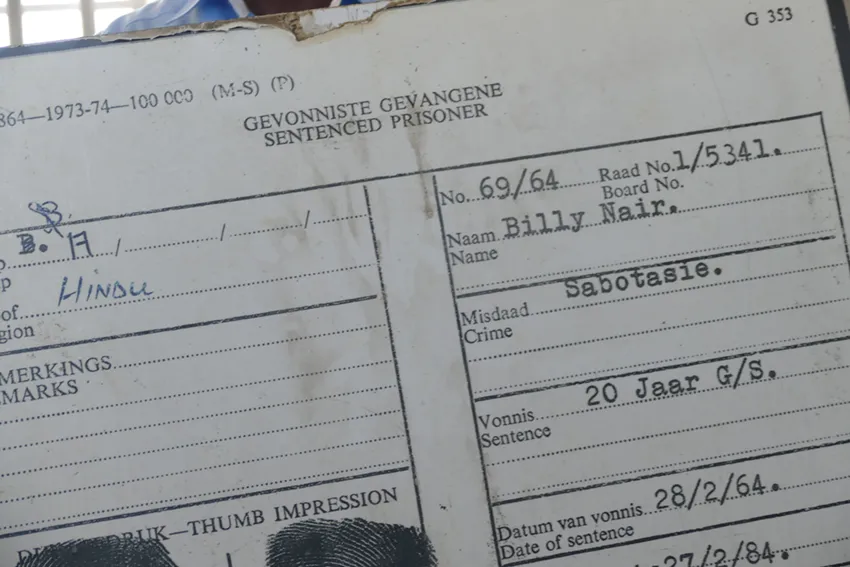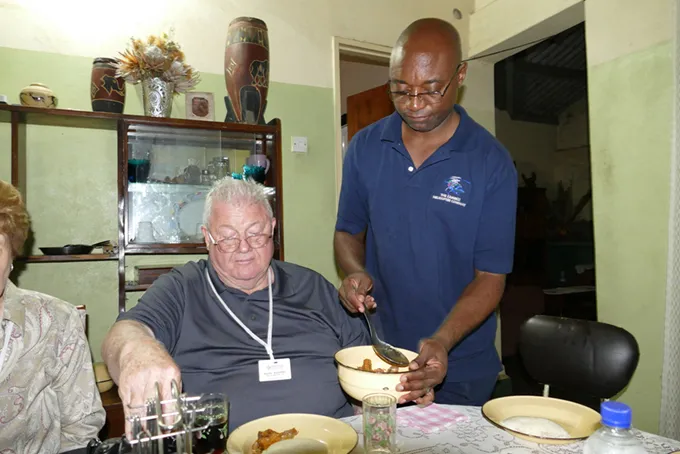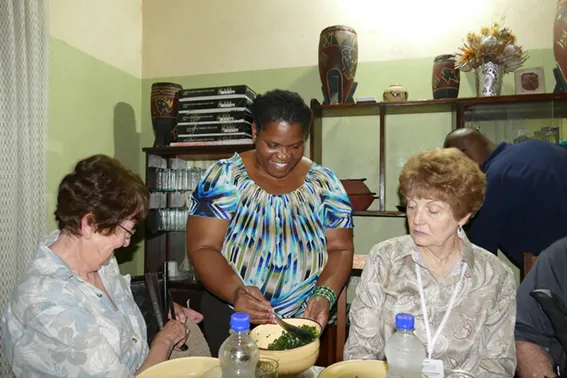
eBook - ePub
Facing History
The Long Road to Freedom
Mary Groesch
This is a test
Compartir libro
- 106 páginas
- English
- ePUB (apto para móviles)
- Disponible en iOS y Android
eBook - ePub
Facing History
The Long Road to Freedom
Mary Groesch
Detalles del libro
Vista previa del libro
Índice
Citas
Información del libro
Progressive educator Mary Groesch reflects upon her thirty years of teaching through sharing Facing History: The Long Road to Freedom, one of the many curriculum units she wrote during her tenure as a teacher. The main elements of progressive practice are evidenced throughout the unit: integrated subjects, allowing students to pursue interests, to work in cooperative groups, to belong to a classroom community, to share their learning, and to have the arts as part of the larger unit of study. Readers will learn how to create progressive units of their own. Faced with more traditional expectations, readers will learn how to facilitate projects to allow their students to experience progressive practice.
Preguntas frecuentes
¿Cómo cancelo mi suscripción?
¿Cómo descargo los libros?
Por el momento, todos nuestros libros ePub adaptables a dispositivos móviles se pueden descargar a través de la aplicación. La mayor parte de nuestros PDF también se puede descargar y ya estamos trabajando para que el resto también sea descargable. Obtén más información aquí.
¿En qué se diferencian los planes de precios?
Ambos planes te permiten acceder por completo a la biblioteca y a todas las funciones de Perlego. Las únicas diferencias son el precio y el período de suscripción: con el plan anual ahorrarás en torno a un 30 % en comparación con 12 meses de un plan mensual.
¿Qué es Perlego?
Somos un servicio de suscripción de libros de texto en línea que te permite acceder a toda una biblioteca en línea por menos de lo que cuesta un libro al mes. Con más de un millón de libros sobre más de 1000 categorías, ¡tenemos todo lo que necesitas! Obtén más información aquí.
¿Perlego ofrece la función de texto a voz?
Busca el símbolo de lectura en voz alta en tu próximo libro para ver si puedes escucharlo. La herramienta de lectura en voz alta lee el texto en voz alta por ti, resaltando el texto a medida que se lee. Puedes pausarla, acelerarla y ralentizarla. Obtén más información aquí.
¿Es Facing History un PDF/ePUB en línea?
Sí, puedes acceder a Facing History de Mary Groesch en formato PDF o ePUB, así como a otros libros populares de Education y Education Biographies. Tenemos más de un millón de libros disponibles en nuestro catálogo para que explores.
Información
Categoría
EducationCategoría
Education BiographiesTeaching Tips for Teachers
Chances are, if you are a teacher and decide to create an integrated unit, you have a curriculum that has been put in place by your district. Checking on the district’s goals for grade level and any required texts would be the first step. Being clear about what you want to achieve is key. If you are not allowed to create an integrated unit, then think of a project for your students that includes different subject areas and helps you to achieve your goals.
I created the unit and then added projects in the following years: creating a quilt and a book explaining what was learned and demonstrating the integration of the subject areas, writing folktales and performing them in front of the school, making masks of the folktale characters, having a storytelling circle for families and drumming using the “talking drums” from Ghana, and putting a historical figure on “trial.”
I recently traveled to southern Africa and thought about how I would modify the unit. While in South Africa I learned about Nelson Mandela through reading his words, visiting where he lived, visiting the jails where he was kept in solitary confinement, and listening to his former guard who had become his friend share what he had learned from him. If I were teaching in the middle grades, I would compare and contrast the African experience in the United States and in South Africa. Whites arrived to colonize South Africa in 1890. In 1930 blacks were not allowed to own land. Black opposition to colonial rule grew through the 1960s. Apartheid (separateness) was adopted when the National Party (NP) took power. In 1950, population was classified by race. Areas were classified for whites and for blacks only. On Robben’s Island, after visiting Mandela’s cell in the prison, I was shown a sample of an identity card that all blacks had to carry with them, at all times. If a black was stopped and didn’t have an ID with them, they were taken off to jail. When courageous people like Senator Bobby Kennedy and Rev. Martin Luther King stand up for those suffering discrimination, violence may result before changes are made.

Prison Island

Prison cell 1

Prison cell 2
With the white rule in 1948, blacks were required to carry ID cards. If they were stopped by officials and did not have their IDs, they were sent to jail.

Prison cell 3
Local Family Dinner
I was part of a small group who ate with a local family. As in West Africa, people do not use personal eating utensils, such as a knife, spoon, or fork. They do use serving spoons to scoop out food out of a common bowl, unlike West Africans who use their hands. Our hosts prepared a special dish for us of cook caterpillar casings.

Typical Meal 1

Typical Meal 2

Typical Meal 3

Typical Meal 4

Typical Meal 5
I knew that I wanted my students to have a historical perspective as well as a human perspective about how Africans were treated and what they had to endure. Lastly, I wanted them to recognize some of the contributions African Americans have made to our culture. At the beginning of any study, assess what students already know about the topic by listing their answers under a K, “What do I already know?” The second list begins with a W for “What do I want to learn?” The last list or column begins with an L that stands for “What have I learned?” Students fill out the L column at the end of the study. This is referred to as a KWL. The K and W lists are brained in the beginning of the unit. Evaluating what students want to learn helps educators with their planning.
When I looked at my curriculum, I felt that I could fit in it the “Long Road to Freedom” after our immigration study, which was our first major unit in the fall. Our immigration study had three important components. First, children needed to understand the history of U.S. immigration (who, when, how and why). Secondly, the children needed to understand the personal impact the move had on the people who immigrated and the subsequent contributions that they made. Thirdly, the children needed to research their own family immigration story. Children researched four main areas: the country of origin, reasons for coming to America, the journey, and adjustments to a new homeland. For their display and presentation, they gathered family artifacts and artifacts that represent the cultural universals of the country that they studied. What was amazing was that in our classroom, one school year, 14 countries from three continents were represented from an immigration period that stretched from the 1750s to the 1960s.
The first being that students would learn about the different groups that immigrated by entering through Ellis Island. The second part was students learning about their own family history through interviewing their relatives. People from almost every country in the world have come to America to make new lives for themselves and their families. They have come for many reasons, including political, economic and religious. Some immigrants even thought that they would find the streets paved with gold. Once here, they realized that the streets were not only unpaved, but they were expected to pave them! In fact, the immigrants faced discrimination and poverty in their new homeland. Although immigrants came from a variety of different backgrounds, they shared common characteristics: determination, optimism, courage, ambition, and a willingness to work hard.

CBulletin Board Photo
The unit has two major celebrations; the students divide into “family groups” to enter Ellis Island. The grade level teachers create a simulation of the immigrant families trying to make it through Ellis Island on their journey to America. Students share their family histories at our “Huddled Masses Café,” which also serves as a holiday celebration for the parents and students. The term “Huddled Masses” comes from a sonnet written by Emma Lazarus in 1883, which was later engraved on a plaque and placed at the base of the Statue of Liberty.
"Give me your tired, your poor
Your huddled masses yearning to breathe free
The wretched refuse of your teeming shore.
Send these, the homeless, tempest-tost to me,
I lift my lamp beside the golden door!"
It is a potluck where each family brings food from their “homeland.” One student’s grandmother introduced the family portion of the unit by discussing what life was like, for her and her family growing up in Europe during the 1930s. In her presentation, she talked about many of the topics that the children would then have to ask of their parents or grandparents, in order to learn the information. There were many activities in the unit including: interviewing relatives, researching different countries, gathering family artifacts, using the computer to do an Ellis Island scavenger hunt, research using Culture-grams, and a program about understanding and identifying stereotypes, reading fiction and non-fiction, participating in an Ellis Island simulation with the other fourth graders, and watching a variety of pertinent videos.
In some years, we were lucky enough to have parents, grandparents, or other relatives speak of their own experience of coming to America. A highlight one year was having two of our guests tell their own immigration stories at our “Huddled Masses Café.” A grandmother of one of my students movingly spoke about how she and her mother left Serbia in 1956, once her father had earned enough money in the United States to send for them. They had a comfortable journey to America on Queen Elizabeth II, but the scars of war, living through World War II, were still fresh in her mind. She spoke eloquently about what her life was like as a child and a young woman in war torn Europe, where she had to hide in a cellar to avoid the bombs. She needed to share one comforter and a pillow with her mother. People risked their lives to leave their shelter in search of food or water, and where some were reduced to eating dead horses to survive. Naturally, she spoke passionately against war because of what she had seen and experienced. She graciously answered questions from the audience. Since she was 20 years old when she arrived in Chicago, she talked about her challenging adjustment. Because she wasn’t in school, it was hard to make friends living in a primarily Polish neighborhood.
Another student’s mother spoke about how she came from the Philippines when she was just a small child of two years. Both of her parents were doctors, and at the time, the United States needed trained doctors so they were able to get their papers. Her parents came first and got settled, while the children stayed with the grandparents in the Philippines. After a year, she and her siblings joined her parents in Indiana. In the Philippines, everyone speaks English, but adjusting to life in Indiana was challenging for her older sister, who was ten years old, because few Filipinos lived there. Most Filipinos settled in California, Nevada, or Texas, where the climate is similar to that of their former homeland. She stressed how her family maintains their close family ties and cultural traditions. Most of her extended family has come to the United States to live, because although, the Philippines is a beautiful country, it is impoverished, which is the reason why her parents decided to make the journey to America.
Important resources for students to use in their research includes the series of books called “The (name of country) American Family Album” written by Dorothy and Thomas Hoobler and published by the Oxford University Press in the late 1990s. Each book in the series contains the same topics: life in the old country, coming to America, the new land, finding a job, putting down roots, part of the United States, a time line of these immigrants in America, and a bibliography of additional resources. In writing the book, the authors interviewed many immigrants, used their black and white photographs to illustrate and document where these people lived, their cherished possessions, and important celebrations.
The Huddled Masses Café serves as a reminder that each person in the classroom shares common threads with others. We enjoy common threads that help to weave the American quilt, a metaphor of the diversity of the cultures we have in our country.
Resources that help students to understand an immigrant’s point-of-view are short stories that describe experiences of growing up and living in multi-racial America. America Street, a Multicultural Anthology of Stories written by some of the best American authors. This anthology was edited by Anne Mazar and published in 1993 by Persea Books. It features 14 stories written by American authors from diverse backgrounds. Some of the authors include: Langston Hughes, Gary Soto, and Naomi Shibab Nye. Another outstanding resource is the book, Us and Them, A History of Intolerance in America, written by Jim Carnes and published by the Oxford University Press in 1996. This book is geared toward the Junior High age student because of the content. The historical events in this book document an event that occurred in 1660, seven events that occurred in the 1880s, and seven events in the 1900’s with the last event that occurred in 1991. It also shows that when people move to a new place, they may experience difficulties because the people who live there do not understand them and are afraid.
One literature book that was truly essential was Seedfolks by Paul Fleishman, the same person who created the poetry book, Joyful Noise: Poems for Two Voices, the model used for the dialogue poems. Seedfolks is a story about the different groups of people who live in Cleveland, Ohio. Each of the 13 chapters is told from a different point-of-view. The storyteller in the first chapter is the youngest character and the last chapter is told from the oldest character. The action centers in a vacant city lot. The characters come together and transform this trash filled lot into a city garden and in the process, become a community. Purchase an audio book because the words are read by multiple voices.
Using the five themes of geography and cultural universals will allow educators to make connections between established units. Country studies could be first examined by location on the earth’s surface. An island country is developed and influenced by factors different from those of the countries that are bordered by other countries. Examine the countries that your students will study and focus on the strongest similarities and differences between them. When creating a unit, allow yourself to be inspired by your students, their interests and your own interests. Once you decide on some major activities such as creating a quilt, runaway to freedom simulation, and writing a newspaper, plan the lessons that enable your students to be successful. You may only want to begin with one major integrated project or activity. A single large project will allow the students to observe that learning is taking place in multiple subject areas at the same time. The major projects mentioned as part of this unit of study include: a newspaper, a quilt with coded messages, a trial of a major historical figure, a simulation of running away to freedom, studying different African American artists and creating art work in the artist’s style (Romare Bearden used collage and Jacob Lawrence used paint). Create folktales that may be performed in front of a larger audience, complete with masks and instruments, write poems that may be later shared at a “Poetry Tea,” and finally take a field trip to a place like “Connor ...